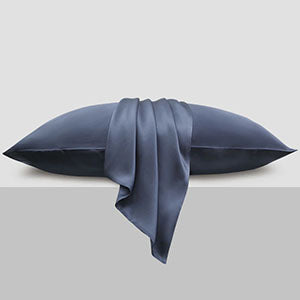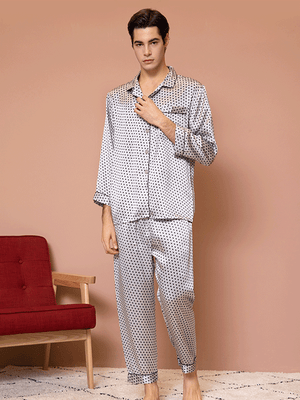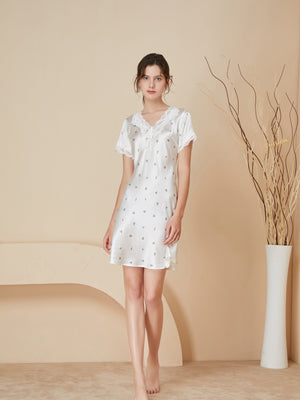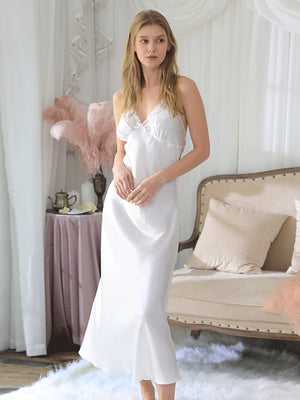Green Silk Robe: The Timeless Elegance of Sustainable Luxury in Fashion and Culture
- by wangfred
-

Imagine slipping into a garment that whispers elegance with every movement, its lush fabric caressing your skin like a second layer of sophistication. The green silk robe is more than just clothing—it’s a statement, a bridge between timeless tradition and contemporary style. From ancient royalty to modern sustainability advocates, this iconic piece has draped itself across centuries, adapting to cultural shifts while retaining its essence of luxury.
A Journey Through History
The origins of silk trace back over 5,000 years to ancient China, where it was reserved for emperors and nobility. Green, a color symbolizing harmony, growth, and renewal, held particular significance in many Eastern cultures. When combined with silk—a fabric synonymous with wealth—the green silk robe became a marker of status and power. Historical records from the Tang Dynasty depict aristocrats wearing emerald-hued silk robes during ceremonial events, their vibrant sheen reflecting both their rank and connection to nature.
Cultural Symbolism
In many Asian cultures, green silk robes were often gifted during weddings or festivals, embodying wishes for prosperity and longevity. The Japanese kosode, an early precursor to the kimono, occasionally featured green silk linings to signify vitality. Similarly, in Renaissance Europe, silk garments dyed with rare green pigments—derived from plants like woad and weld—were prized by the elite, though their production was labor-intensive and costly.
The Modern Revival
Today, the green silk robe has reemerged as a favorite among fashion enthusiasts and eco-conscious consumers. Designers are reimagining this classic garment through minimalist cuts, bold embroidery, and innovative draping techniques. The rise of sustainable fashion has also elevated silk’s appeal, particularly when dyed using organic methods. Plant-based dyes, such as those extracted from spinach or nettles, offer a vibrant green hue without the environmental toll of synthetic chemicals.
Styling Versatility
Whether paired with tailored trousers for a chic evening look or worn over swimwear as a beach cover-up, the green silk robe adapts effortlessly to diverse settings. Its versatility lies in its ability to balance refinement with relaxation. Fashion stylists recommend:
- Layering it over a slip dress for a monochromatic ensemble
- Cinching the waist with a metallic belt to accentuate curves
- Choosing robes with subtle patterns for daytime casualwear
Ethical Considerations
As demand for sustainable textiles grows, the ethics of silk production have come under scrutiny. Traditional silk harvesting involves boiling cocoons, a practice criticized by animal rights advocates. However, peace silk—also known as ahimsa silk—offers a cruelty-free alternative by allowing moths to emerge naturally before processing the fibers. When shopping for a green silk robe, consumers are increasingly seeking certifications like Global Organic Textile Standard (GOTS) to ensure ethical sourcing.
Longevity and Care
A well-crafted silk robe can last decades with proper care. Key maintenance tips include:
- Hand-washing in cold water with mild detergent
- Avoiding direct sunlight to prevent fading
- Storing on padded hangers to maintain shape
These practices not only preserve the garment’s beauty but also align with sustainable fashion principles by reducing waste.
A Canvas for Artistry
Beyond its functional role, the green silk robe serves as a medium for artistic expression. Intricate techniques like shibori (Japanese tie-dye) or gold-leaf embroidery transform the robe into a wearable masterpiece. Contemporary artists have even showcased silk robes in galleries, blurring the lines between fashion and fine art.
Picture yourself standing at the crossroads of heritage and innovation, wrapped in a fabric that has adorned philosophers, poets, and visionaries. The green silk robe isn’t merely an item in your wardrobe—it’s an invitation to embrace a legacy of beauty, responsibility, and self-expression. As you fasten its sash, you’re not just wearing silk; you’re carrying forward a story that began millennia ago, now redefined for a world that values both splendor and sustainability.












